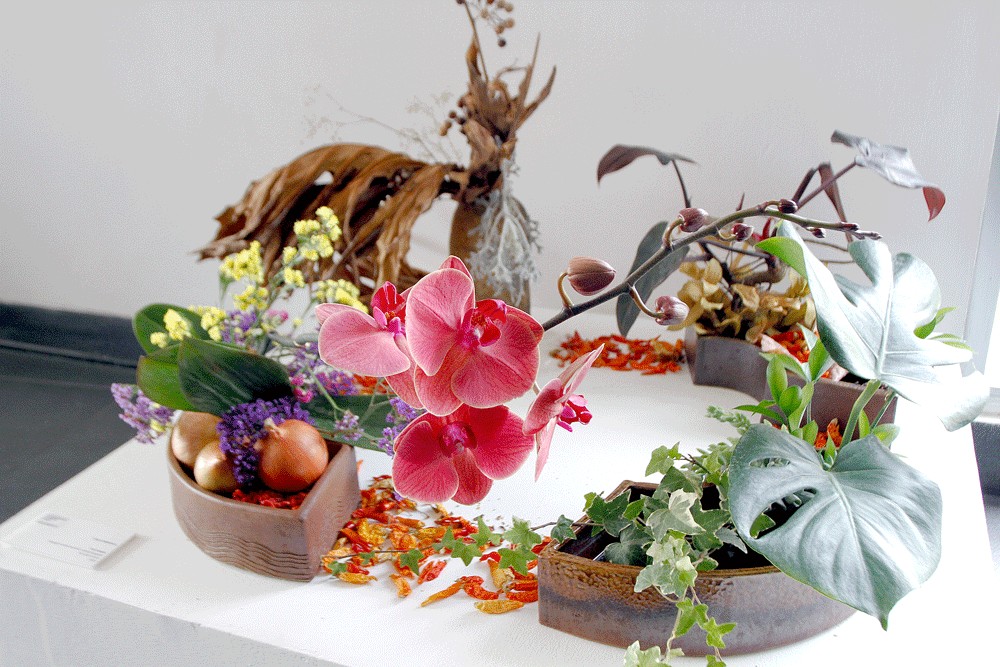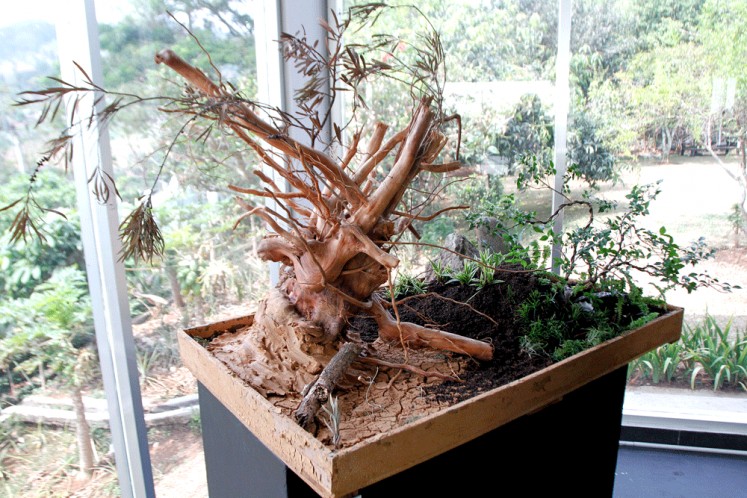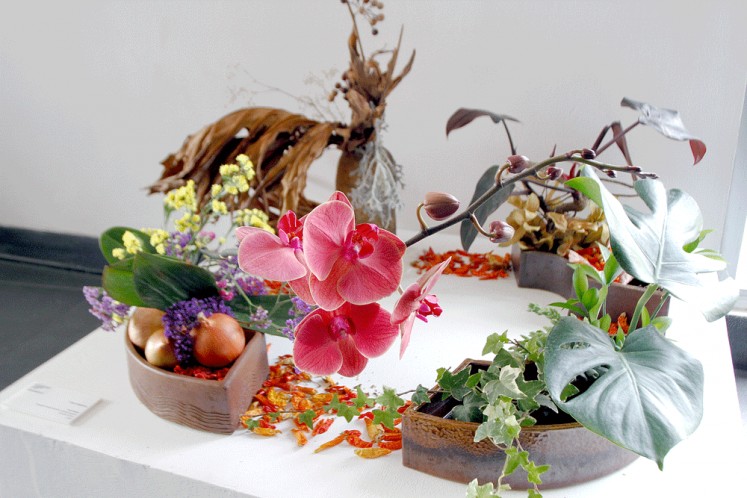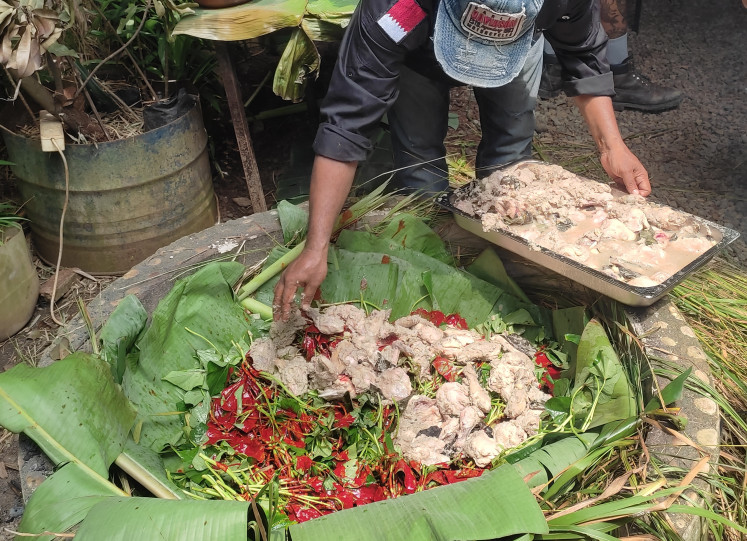Popular Reads
Top Results
Can't find what you're looking for?
View all search resultsPopular Reads
Top Results
Can't find what you're looking for?
View all search resultsBlurring line between ikebana and contemporary art
Ikebana — the Japanese art of flower arrangement — is seen by its practitioners as a way to connect the soul with nature. It is more than an art, and is a contemplative ritual.
Change text size
Gift Premium Articles
to Anyone
I
nterested in exploring the contemplative and creative aspects of ikebana, Bandung artist Nia Gautama invited 16 ikebana artists and 10 contemporary visual artists to present their interpretations on ikebana at the “[not] Artofficial[?]: Out of Track” exhibition.
The month-long exhibition runs until Nov. 5 at the Lawangwangi Creative Center in Bandung, West Java.
Nia, who curated the exhibition along with ikebana artist Andajani Trahaju, hopes that the exhibition will help introduce ikebana to the contemporary art community.
The 10 contemporary artists were challenged to create their own ikebana arrangements for the exhibition after taking part in an ikebana workshop.
“We gave [the artists] freedom. They could explore [ikebana’s] philosophy, techniques and so forth,” Nia said before opening the exhibition.
Meanwhile, the 16 ikebana artists, mostly from Indonesia and Japan, were asked to read several articles on contemporary art before creating contemporary ikebana arrangements.
Cracked earth: Mimi Safira Permana touches on environmental issues in her ikebana-inspired work, Warisan. (The Jakarta Post/Arya Dipa)In his Assemblage No. 3 – Inanimate Saga installation, Erwin Windu Pranata explored ikebana’s concept of utilizing a variety of natural materials.
Instead of using natural materials, however, Erwin created his ikebana arrangement using daily items, such as a dish rack, broom, brush, doormat, dust cloth and a modified traffic cone, arranging them with a hose and a bucket.
While Erwin used brightly colored household items for his ikebana design, Maradita Sutantio took a subtler, more natural approach.
Maradita’s installation, After the Promised Land, arranges skeletons in the shape of mandala, a Buddhist symbol, on a bed of used tea leaves. As a final touch, she sprinkled water spinach seeds on the installation, hoping that they will germinate and grow during the month-long exhibition.
“I analogized ikebana to the cycle of life and death that is very close to us,” said Maradita.
Life and death also inspired Japanese ikebana artist Chiemi Nakajima to create her charming Four Seasons arrangement. Nakajima used four quarters of circular ceramic pots containing orchids, dry leaves and leafy plants. She then scattered red chilies and salt between the pots, a possible symbolic reference to the flow of Zen energy.
Ceramic artist Ryota Shioya and ikebana master Tamaki Morii are the only artists who collaborated in producing two arrangements for the exhibition. Shioya created three ceramic pieces and Morii arranged a castor plant, jackfruit and a plant stem in them.
Circle of life: Maradita Sutantio has arranged skeletons in a mandala-like shape in After the Promised Land. (The Jakarta Post/Arya Dipa)The Hazumi#3 and Hazumi #4 collaborative arrangements complement each other. Morii refers to the pieces as “dancing flowers” because the castor plant and the plant stem lean toward each other to intertwine in the middle.
“[They seem motionless] but they are moving,” she said.
At a glance, ikebana and contemporary visual art appear to have similar approaches in focusing on composition, color, arrangement and materials.
Perhaps, because of these similarities, art curator Asmudjo Jono Irianto felt that “[not] Artofficial[?]: Out of Track” was not very different to other contemporary art exhibitions.
Transitions: Chime Nakajima has used four “pies” of a ceramic vessel for a seasonal arrangement in Four Seasons. (The Jakarta Post/Arya Dipa)“[The exhibition] does not show an intersection between the two [art forms]. It even becomes more confusing to call it contemporary ikebana,” he said.
Asmudjo believed that the curators should have encouraged the contemporary and ikebana artists to collaborate, and he expected the exhibit’s artists would create artwork together, as did Shioya and Morii.
Art lovers may find that “[not] Artofficial[?]: Out of Track” does not stand out from the crowd. But all criticism aside, the exhibition can be appreciated for giving visitors a chance to discover a different kind of ikebana creation, some of which do not involve flowers, stems or leaves.














